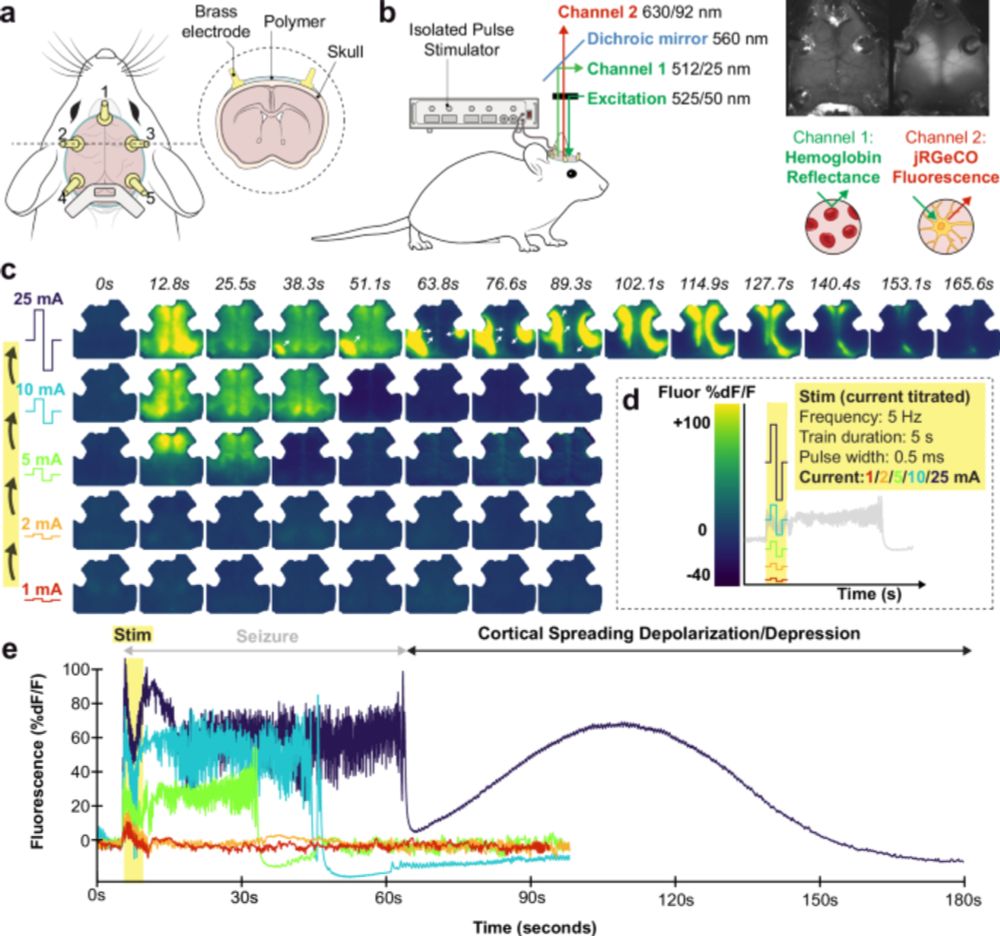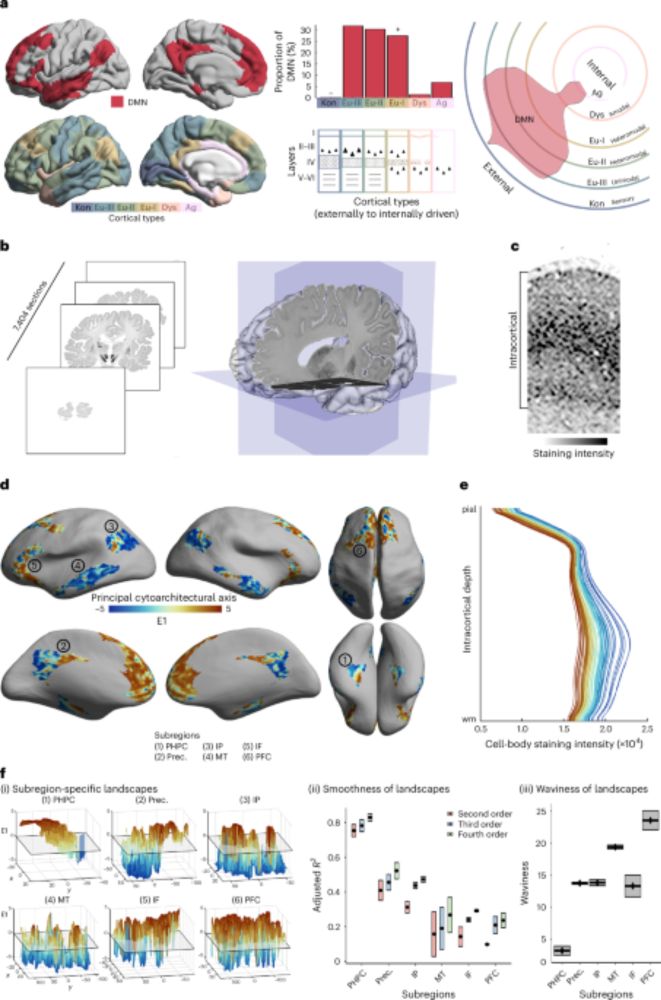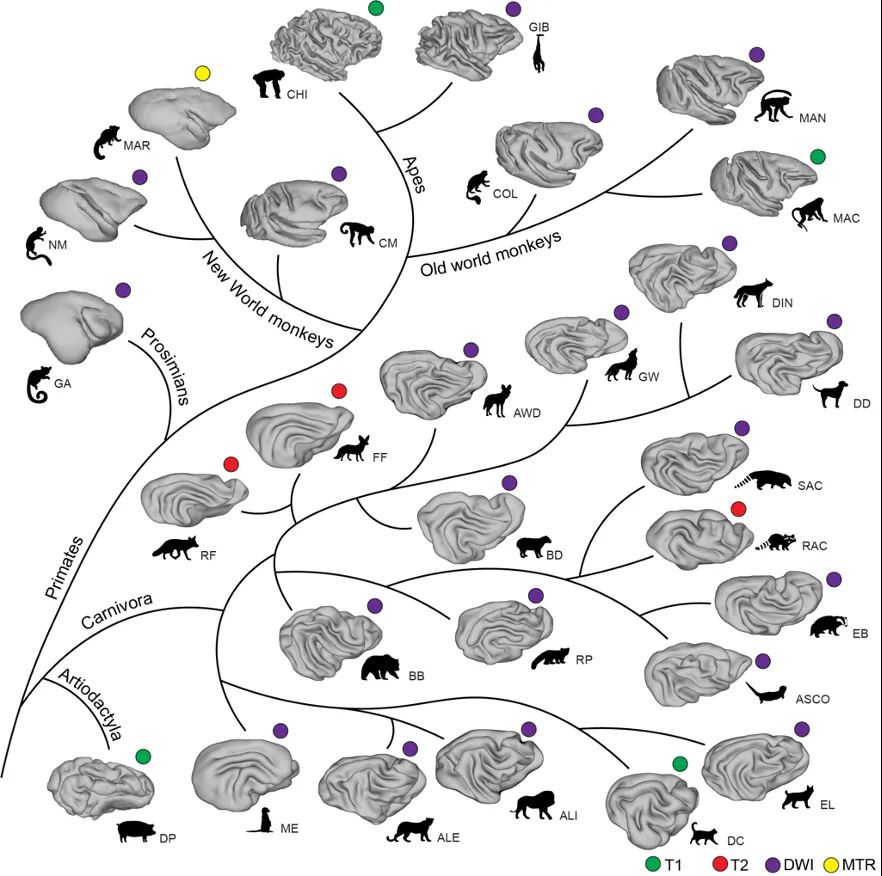
Precon_all is finally citeable! I’m relieved, pleased, thrilled and all other superlatives to present to you our preprint describing the inner workings of the precon_all pipeline for semi-automated non-human cortical surface reconstruction! www.biorxiv.org/content/10.1... 1/10
06.06.2025 17:04 — 👍 56 🔁 19 💬 4 📌 6
Pretty incredible. Love "it's about the journey"!
21.03.2025 00:13 — 👍 1 🔁 0 💬 0 📌 0
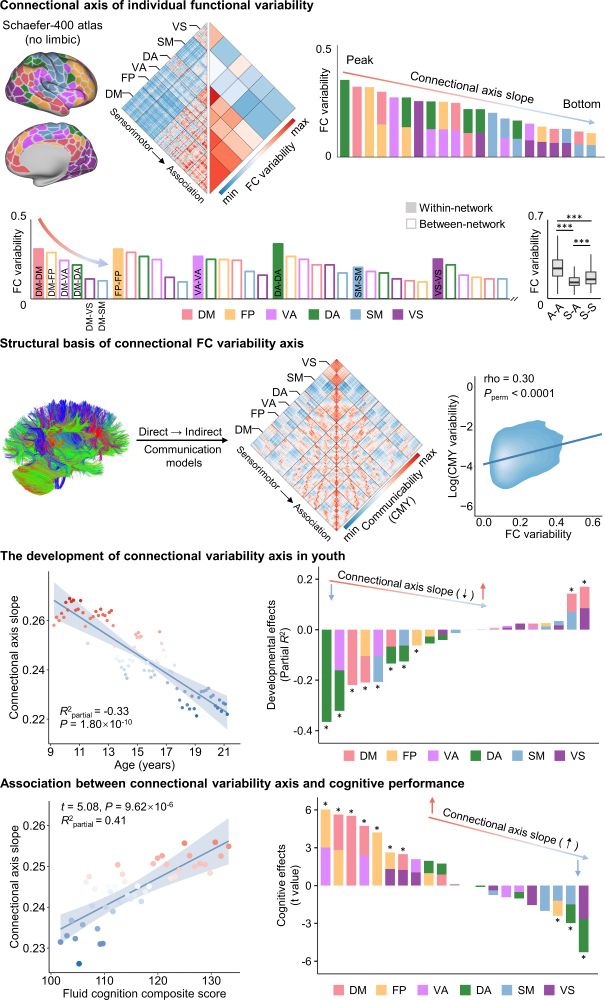
Excited to share our work “Connectional axis of individual functional variability: Patterns, structural correlates, and relevance for development and cognition,” now out at @pnas.org www.pnas.org/doi/10.1073/....
20.03.2025 13:29 — 👍 12 🔁 3 💬 1 📌 2
Super convincing results alongside treatment implications where options historically haven't been great. Thread below and in longer format on the other site x.com/PinesAndrew/...
12.02.2025 23:00 — 👍 0 🔁 0 💬 0 📌 0
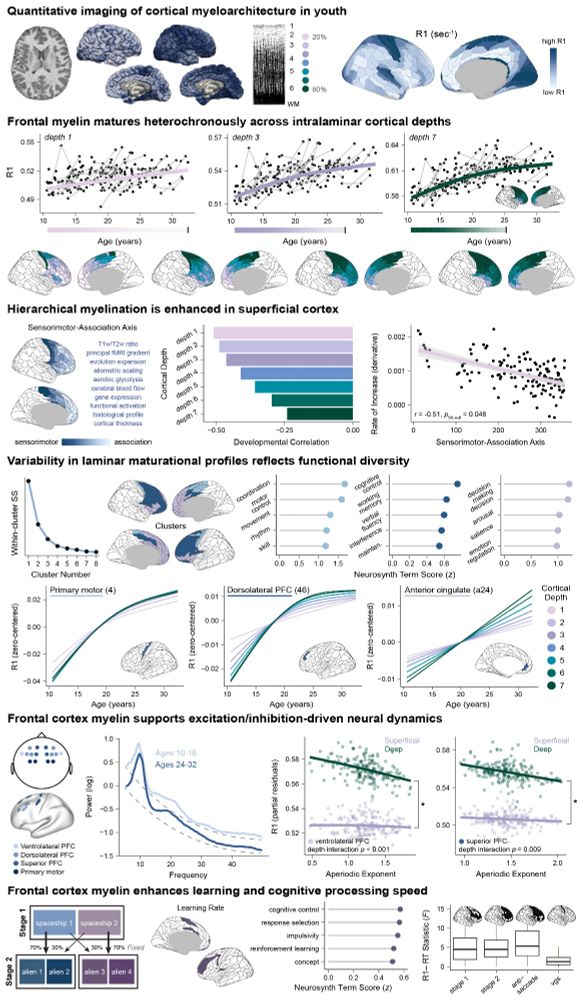
Cortical maturation unfolds hierarchically, endowing the PFC with extended plasticity. But do timeframes of plasticity vary across PFC layers?
With 7T quantitative myelin imaging, EEG, and cognitive data, we uncover heterochronous laminar maturation in the PFC 1/n. www.biorxiv.org/content/10.1...
07.02.2025 18:51 — 👍 127 🔁 45 💬 4 📌 5

Rarely categorical, always high-dimensional: how the neural code changes along the cortical hierarchy
The brain is highly structured both at anatomical and functional levels. However, within individual brain areas, neurons often exhibit very diverse and seemingly disorganized responses. A more careful analysis shows that these neurons can sometimes be grouped together into specialized subpopulations (categorical representations). Organization can also be found at the level of the representational geometry in the activity space, typically in the form of low-dimensional structures. It is still unclear how the geometry in the activity space and the structure of the response profiles of individual neurons are related. Here, we systematically analyzed the geometric and selectivity structure of the neural population from 40+ cortical regions in mice performing a decision-making task (IBL public Brainwide Map data set). We used a reduced-rank regression approach to quantify the selectivity profiles of single neurons and multiple measures of dimensionality to characterize the representational geometry of task variables. We then related these measures within single areas to the position of each area in the sensory-cognitive cortical hierarchy. Our findings reveal that only a few regions (in primary sensory areas) are categorical. When multiple brain areas are considered, we observe clustering that reflects the brain’s large-scale organization. The representational geometry of task variables also changed along the cortical hierarchy, with higher dimensionality in cognitive regions. These trends were explained by analytical computations linking the maximum dimensionality of representational geometry to the clustering of selectivity at the single neuron level. Finally, we computed the shattering dimensionality (SD), a measure of the linear separability of neural activity vectors; remarkably, the SD remained near maximal across all regions, suggesting that the observed variability in the selectivity profiles allows neural populations to maintain high computational flexibility. These results provide a new mathematical and empirical perspective on selectivity and representation geometry in the cortical neural code. ### Competing Interest Statement The authors have declared no competing interest.
Rarely categorical, always high-dimensional: how the neural code changes along the cortical hierarchy
www.biorxiv.org/content/10.1...
#neuiroscience
22.11.2024 12:48 — 👍 33 🔁 11 💬 2 📌 0
We're excited to release new versions of our BIDS-Apps for processing and analyzing #dmri data, QSIPrep and QSIRecon! Our team has been working hard to prepare these pipelines to process infant data and bring them in line with the @nipreps.bsky.social ecosystem. #neuroimaging #nipreps #bids 1/10
22.11.2024 14:39 — 👍 39 🔁 24 💬 1 📌 2
Home | Applied Cognition and Personalized Neuroscience Lab
Welcome to the Applied Cognition & Personalized Neuroscience Lab! The Applied Cognition and peRsonalized Neuroscience (ACORN) lab is a collabora ...
Super excited to share our official ACORN Lab website!! 🍁🧠
appliedcognitionlab.psychology.uconn.edu
We are recruiting new team members at the undergraduate, graduate, and postdoctoral levels - join us!
#Neuroskyence #neuroimaging #PsychSciSky #CogPsyc #ClinPsych #CogDev #devpsy #CogSci
18.11.2024 15:24 — 👍 73 🔁 30 💬 2 📌 2
Spiraling waves are everywhere in cortex. They mirror each other across long distances and hemispheres. And they are coordinated with subcortical spiking.
The brain is telling us how it works. biorxiv.org/content/10.1...
14.12.2023 17:16 — 👍 4 🔁 1 💬 0 📌 0
SO proud of my outstanding mentee Alisha Shetty for her FIRST FIRST AUTHOR article in the JNeuro Journal Club! Alisha wrote such a thoughtful commentary on current work in this field, reflecting her impressive breadth and depth of knowledge and scientific thinking! www.jneurosci.org/content/43/4...
25.10.2023 16:57 — 👍 9 🔁 1 💬 1 📌 0
🎇Join Our Team 🎇 Ted Satterthwaite and I are recruiting a new post-doc or senior scientist to lead a series of meta-analyses focused on clinical trials of PSYCHEDELICS. Expertise in meta-analyses, clinical trials, or psychiatry ideal. Flexible start date/compensation. Please share / DM me!
11.10.2023 15:27 — 👍 4 🔁 2 💬 0 📌 0
Postdoc at FMRIB in Oxford. Member of the cognitive neuroanatomy lab. When not at the lab I’ll see you on the ice
Neuroscientist post-doc working with Nico Dosenbach at Washington University in St. Louis
Instructor on K99/R00 in psychiatry @ Stanford, MD/PhD @ Penn, SB @ MIT. Interested in the neural electrophysiology of cognition, perception, and psychiatry. ethanasolomon.com
Pediatric Neuroimaging Lab in the Department of Population and Public Health Sciences
Neuroimaging | Brain development | Sex differences | Air pollution | USC
Computational Neuroscientist, NeuroAI, Causality. Monash, UCL, CIFAR. Lab: https://comp-neuro.github.io/
Temple Clinical Psychology PhD Student 🦉 | Heterogeneity in Brain Networks & Psychopathology | First Gen | NRSA F31 Fellow
assistant professor UW Madison psych | studies neurodevelopment, emotion regulation, and decision-making | dumpster diving for psychic retrieval
Senior scientist at Istituto Italiano di Tecnologia (Rovereto, Italy)
🧠 🐁 Functional Neuroimaging, Brain (dys)connectivity and Autism
ERC Grantee
https://www.iit.it/it/people-details/-/people/alessandro-gozzi
Compulsive oversharer of interesting research ...
Neurodevelopment, Neuroimaging, Individual differences and Twins, Open Science and rstats.
@ MCRI
@ The University of Melbourne
https://orcid.org/0000-0002-8396-140X
Researcher exploring pain, depression, and treatment expectations (@Büchel Lab, @Pizzagalli Lab, @SFB/TRR289).
Hopefully with my own lab soon 😇
Hamburg & Boston
DFG Scholar // Aktiv @ Grüne Hamburg
www.kinokulturhamburg.de
https://www.lewisneurolab.org/
Fellow of the Royal Society of Canada. All comments are my own. Scientific Director of the Centre for Functional and Metabolic Mapping, 🇨🇦's national ultra high field MRI platform. cfmm.uwo.ca
https://orcid.org/0000-0002-7916-0263
equal parts physics, left politics, DIY science, and photos (space/birds/stuff). formerly astroparticle physics, now astrodynamicist. "dr" in certain extremely specific professional contexts. ohio for 3 decades then west coast (sfbay, now pdx). fuck gen ai
Neuroscience, Montreal Neurological Institute, McGill University
Principal Researcher @ Microsoft Research.
Cognitive computational neuroscience & AI.
Writer. Nature wanderer.
www.momen-nejad.org
Neuroscientist, professor
AI guided tour - https://www.youtube.com/watch?v=fOORfzGjCTA
ENIGMA guided tour - https://www.youtube.com/watch?v=YNjP5nZsJyQ
Diffusion MRI of Brain Diseases - https://www.youtube.com/watch?v=i2jHFm0wcN0
On a sojourn in the Wild West, in passage from this frame to the next. (Also, Prof. of Psychological and Brain Sciences at Dartmouth)
🇦🇺
Assistant Professor of Psychiatry.
Network neuroscience, MRI, psychiatry.
parkeslab.com

